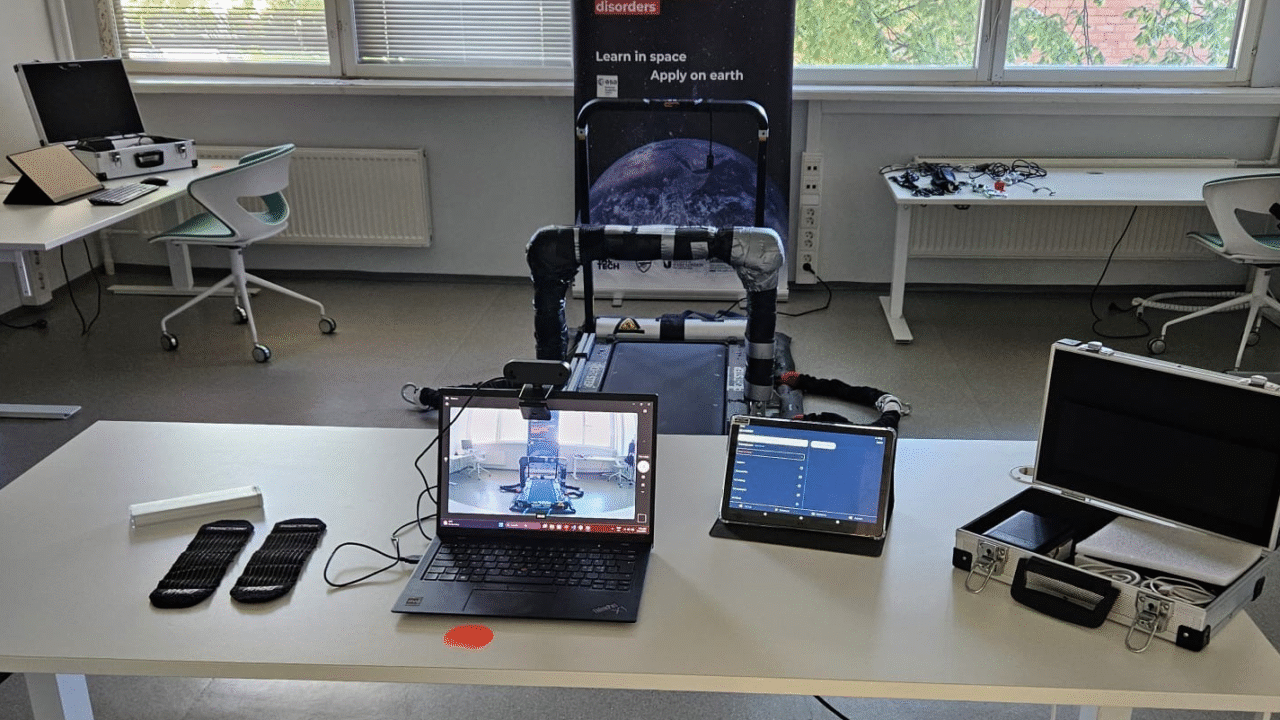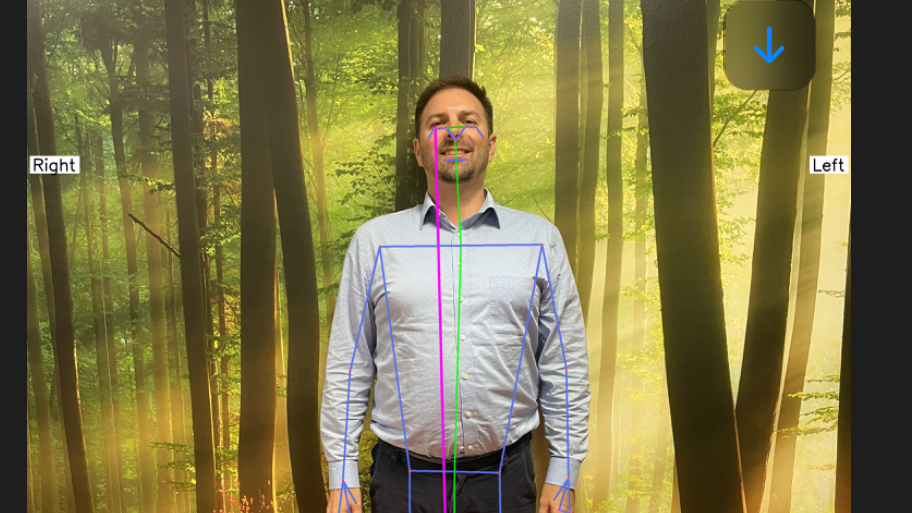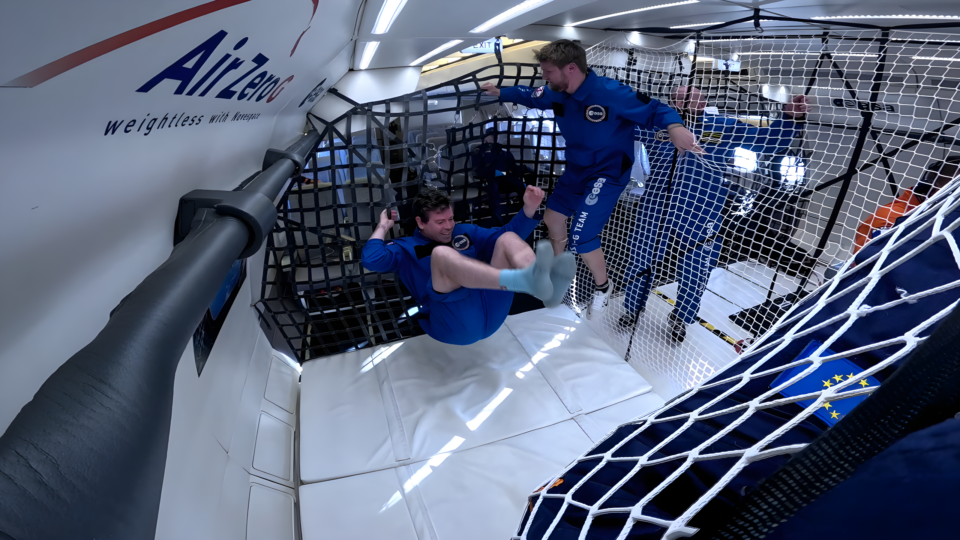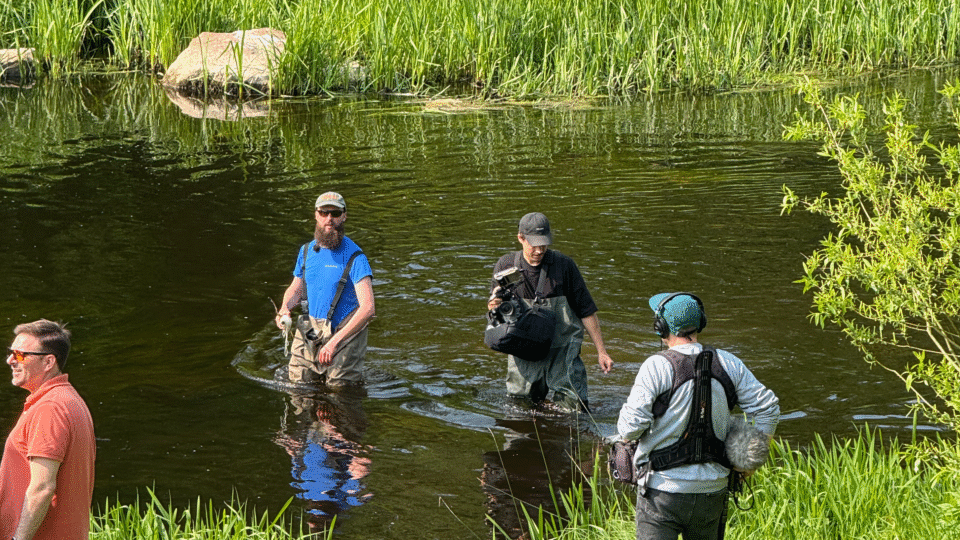The partnership between TalTech and RightStep began through the SekMo-funded OsteoSense project, which focus on monitoring bone health and preventing bone loss during space missions. “OsteoSense is concerned with bone health, particularly bone loss in space missions. Health of astronauts is key to future exploration goals,“ explained Mike Crooks, co-founder of RightStep.
While the OsteoSense project focuses on developing sensors to monitor joint and bone health, the posture tool emerged from the same underlying engineering principles, applying technical expertise to human health both in space and on Earth.
According to professor Jeffrey Andrew Tuhtan, who leads the work at TalTech, the idea itself originated from Crooks. “A lot of problems with our musculoskeletal system can be detected by looking at a person’s static posture. If you just stand still and are in a relaxed posture, there are many parameters – the angle of your shoulders, the orientation of your hips, the distances between segments – that tell you a lot,“ Tuhtan said.
The app uses computer vision and artificial intelligence to automatically detect key body points and measure asymmetries. Tuhtan explained that this technological capability inspired the team to create a freely available, open tool that anyone could use without needing professional assistance.
A trustworthy AI that protects user privacy
One of the strong features of our app is it doesn’t record anything, Tuhtan explained that the app processes information entirely on the user’s device – it doesn’t store or transmit any data to external servers.That privacy-first design was intentional.
Tuhtan and Crooks both said they wanted to show that artificial intelligence can be trustworthy. “People are worried about companies taking their data and keeping them. The easiest way to solve that is simply to make it impossible to collect people’s personal data in the first place,“ Tuhtan said.
Crooks added that the goal from the start was to make something both simple and grounded in real-world biomechanics. “The starting point was to create a tool that is simple to use yet founded on a robust model and process that is actually used in the real world,” he said.
He said that it uses pose estimation on a photo but outputs the analysis in simple English.
Users can already try the free app by taking a full-body photo while standing in a natural position.
“A lot of problems with our musculoskeletal system can be detected by looking at a person’s static posture. If you just stand still and are in a relaxed posture, there are many parameters – the angle of your shoulders, the orientation of your hips, the distances between segments – that tell you a lot.”

According to Tuhtan, the health and space technology lab, officially opened this year, follows a very practical, low-budget philosophy. Photo: Jeffrey Andrew Tuhtan
A hands-on lab for students
The Health and Space Technology Lab, officially opened this year, embodies what Tuhtan describes as a “very practical, low-budget philosophy.” There’s no glossy façade or large research grant behind it – just initiative, curiosity and teamwork. “We simply found a free room in the university’s cybernetics building, moved in our equipment, and started working,” Tuhtan explained.
The team built the lab from donated sensors and hardware provided by industry partners eager to test their technology under real conditions. The result is a hands-on environment where ideas turn quickly into working prototypes. Equally central to the lab’s spirit is student involvement. TalTech undergraduates are invited to join real projects from day one – coding, testing and experimenting alongside researchers. “Students are incredibly motivated. They want to build, to program, to make something useful. And that’s exactly what this lab is about.”
Crooks noted that many young people leave Estonia believing there are no real opportunities for them..„That’s simply not true – by engaging students in collaborations like this, we can expose them to opportunities they didn’t know existed.”
A good example is Katerina Manuilova, a second-year TalTech informatics student who, during her internship, was responsible for a large part of the app’s coding and debugging work under the guidance of the project team.
Crooks added that her involvement gave her “tangible experience she can now cite on her résumé,” noting that RightStep sees such cooperation as a way to inspire future hires rather than gain short-term business benefit.
Manuilova ended up in the lab thanks to a friend who invited her along, and she herself was, as she put it, “looking for opportunities to join university research groups.” The experience taught her to see development as a whole. “I also gained experience in taking responsibility and making small, independent decisions when designing the application views.”
Manuilova said that even the most practical university courses often give only a limited idea of how computer science is applied in real life: “Research projects that require a direct contribution make it possible to connect programming with other interesting fields and to see whether – and how – computer science can improve existing solutions. And besides, it simply feels good to have built something that people can actually try out and give feedback on.”
“We simply found a free room in the university’s cybernetics building, moved in our equipment, and started working,”

The collaboration between RightStep and TalTech extends beyond software. According to Crooks, the jointly developed bone-health sensors have already taken part in parabolic test flights and have been included in European Space Agency bed-rest study applications, opening up new opportunities to examine how the human body changes under low-gravity conditions. Photo: Jeffrey Andrew Tuhtan
Engineering collaboration that reaches orbit
RightStep and TalTech’s collaboration is not limited to software. Crooks said that sensors developed together have already flown on parabolic flight tests and been included in proposals for European Space Agency bed rest studies, opening new ways to study how the human body deconditions in low-gravity environments. “To make this kind of progress requires an ecosystem. It simply wouldn’t be possible without the expertise that TalTech brings,“ he noted.
Both researchers view space as an ideal testing ground for developing new health technologies. Tuhtan explained that astronauts face major challenges in collecting physiological data, as traditional sensor suits are time-consuming and cumbersome to use. The team therefore aims to create a contactless, non-invasive method for posture analysis that would work efficiently in space and be equally practical for use on Earth.
Crooks agreed that the knowledge gained from space research will have significant benefits on Earth, noting that studying human health in extreme environments can lead to new solutions for improving healthcare and transforming how people monitor and maintain their well-being.
What comes next?
The team is already developing the next version of the AI tool – one that will integrate a large language model capable of interpreting results and recommending corrective exercises. Users will be able to repeat the analysis after a short period to see whether their posture has improved.
While the current app is free to use, Tuhtan noted that in the future, more advanced tools intended for professional rehabilitation and in-depth analysis will likely follow a subscription or paid model. The idea is to make simple diagnostics accessible to everyone while building a sustainable path for research-based medical applications.
But for now, Tuhtan keeps the message simple: “Use the app. Take off your shoes, stand next to a wall, take a photo and see what the AI has to say.”
“To make this kind of progress requires an ecosystem. It simply wouldn’t be possible without the expertise that TalTech brings.”




